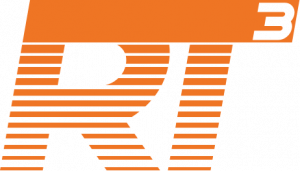By Karen L. Edwards, RT3.
Microsoft recently shared in a blog post how RT3 member and recent recipient of Roofing Contractor’s Residential Roofing Contractor of the Year Kelly Roofing found success with a task-focused field application that keeps everyone update in real-time using PowerApps on Microsoft’s Power Platform Solution.
Kelly Roofing partnered with PowerObjects, an HCL Technologies company, to implement Microsoft Dynamics CRM in 2012, Field Service in 2015 and Dynamics 365 in 2016. Dynamics 365 allowed them to manage all of their customer and work order information for each roof repair and installation project. They had success managing the complex details and information needed for communications, dispatching, driving directions and status updates.
Their challenge came in needing a solution that would allow crew members in the field to provide status updates while on a job site. Not every job site has great cell service meaning they would need a solution that would allow updates and photos to be stored on the smartphone or tablet with the ability to sync later, when service was available.
Their existing process before Power Platform was inefficient and causing their teams to spend their days on the rooftops and their evenings on the computer, trying to find, organize and upload the day’s photos. Ken Kelly, president of Kelly Roofing, wanted to find a solution that would ensure the “team is spending time bringing value to our customers, while improving the time we spend with our own family.”
Kelly evaluated software programs designed for capturing job photos but found them to be costly and would result in creating additional data silos, something they wanted to avoid. He turned to partner PowerObjects to help create a PowerApps mobile app that would simplify the process of job photos and status updates while in the field.
PowerApps was deployed to all 120+ crew members who have been using it since spring 2019 with much success. Crews take photos, before, during and after a job. They are stored offline and upload to SharePoint Online when the device has a connection. Photos are automatically named and include the status and location of the job.
In addition to photo organization, the PowerApps has allowed them to do even more:
Scheduling: Crew leaders no longer have to come to the office in the morning to pick up job tickets. The information is provided directly though the app and includes client information, job information, directions and details. They have realized a 25.8 percent reduction in trip time.
Reporting: Customers receive a Daily Job Site Report that let’s them know the status of the job and any notes from the crew. Before the app, crew leaders would need to find a WiFi connection and log into a laptop to provide status reports and customer communications. Kelly Roofing has seen a 36% drop in customer call backs since job information is available to everyone in real time.
Documentation: All documents related to a job are available to everyone from the contract to the purchase order and the entire job history is available.
Since implementing the Power Platform solution, Kelly Roofing has realized a 91% decrease in processing time because of the photo reconciliation time savings. Employees are pleased with the app as well. Frank Viera, project supervisor at Kelly Roofing, said, “I used to spend extra time in my home from 5 – 10 pm looking for pictures. I even had my son help me. Now I don’t have to do that!”
Read the complete case study and see screenshots of the application on the Microsoft blog.
Stay up-to-date with the latest roofing industry technology news when you sign up for the RT3 SmartBrief e-newsletter.
